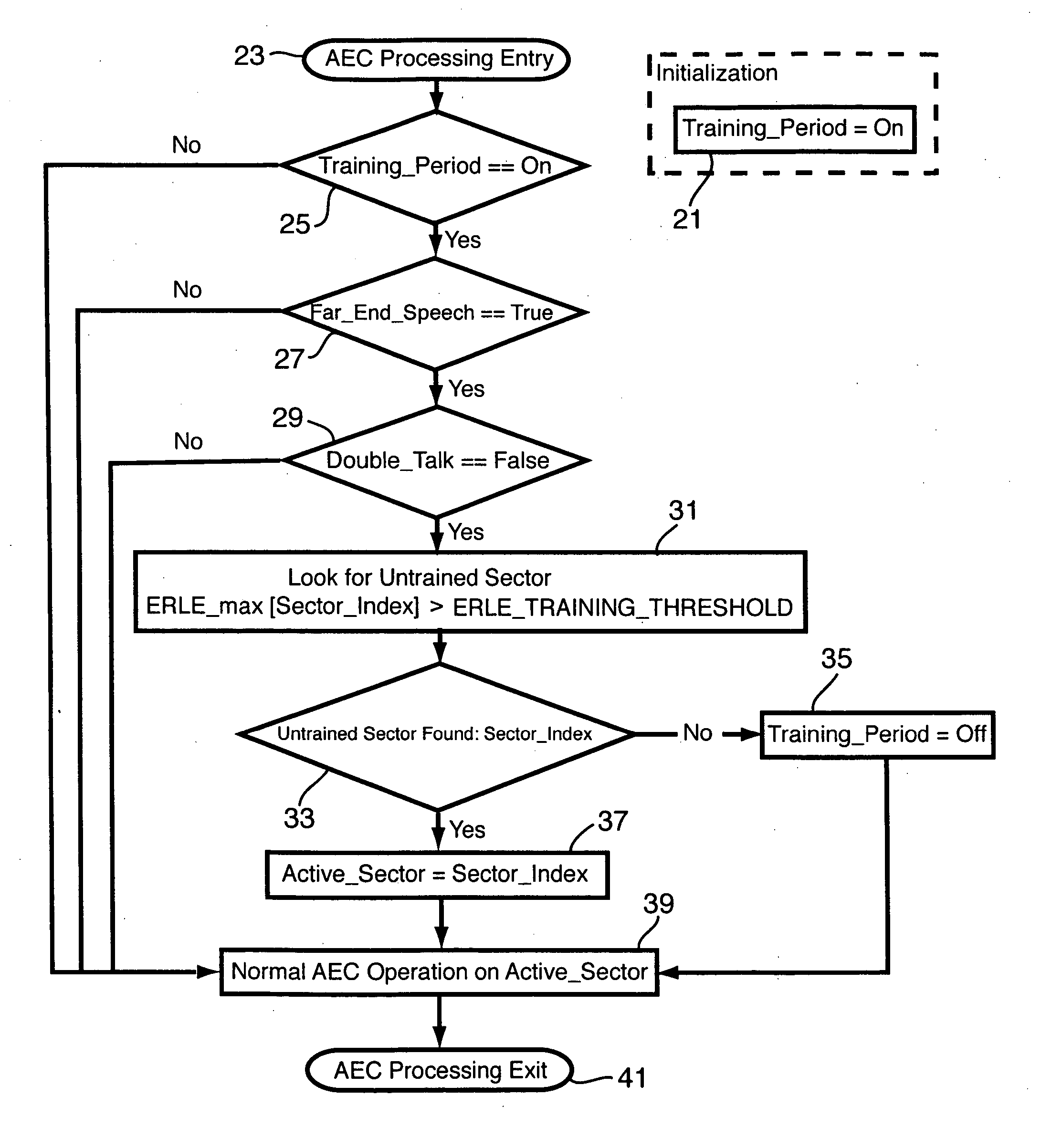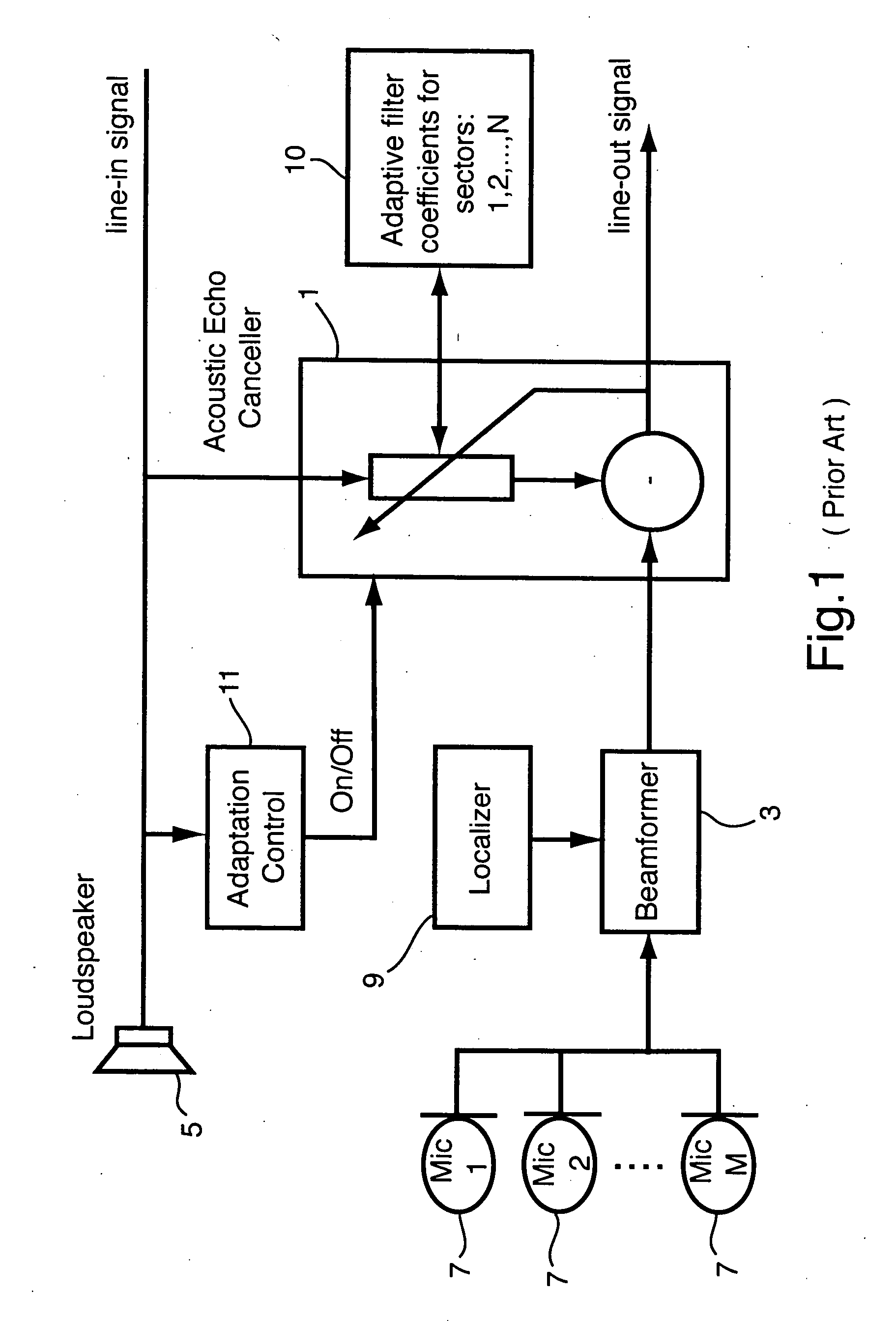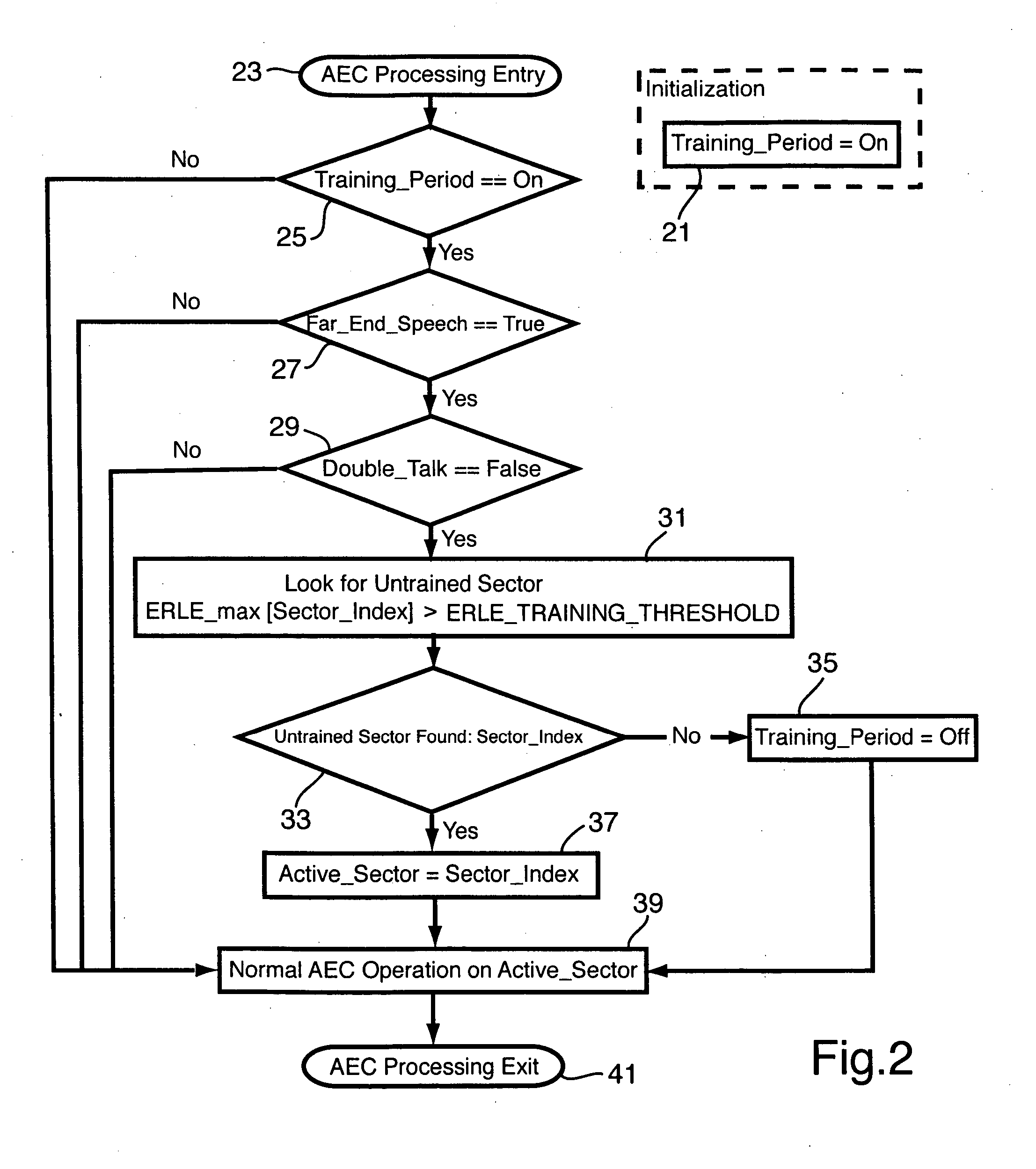Method of accelerating the training of an acoustic echo canceller in a full-duplex beamforming-based audio conferencing system
a beamforming-based audio conferencing and acoustic echo canceller technology, applied in the field of audio conferencing systems, can solve the problems of not being able to meet the requirements of a fixed or adaptive beamformer, the echo effect is well known, and the difficulty of dealing with echo problems,
- Summary
- Abstract
- Description
- Claims
- Application Information
AI Technical Summary
Benefits of technology
Problems solved by technology
Method used
Image
Examples
Embodiment Construction
[0015] With reference to FIG. 1, an AEC 1 and beamformer 3 operate on real-time signals such that far-end signals fed to the loudspeaker 5 are also used as the AEC reference signal and signals from microphones 7 are fed to the beamformer 3. The AEC operates at the output of a switched beamformer. The beamformer generates an output signal for a particular spatial area (or look direction) as specified by the Localizer block 9. Various methods can be used to control the AEC convergence process for adaptation and storage of filter coefficients in a workspace 10. In general, the adaptation is performed whenever there is a sufficient level of the reference signal and there is no near-end speech activity (that is, no double-talk) as detected by a Voice Activity Detector (VAD) within the Adaptation Control (AC) block 11.
[0016] As set forth in U.S. patent application Ser. No. 9 / 971225, filed Oct. 3, 2001 by Franck Beaucoup entitled “Method for handling far-end speech effects in hands-free t...
PUM
 Login to View More
Login to View More Abstract
Description
Claims
Application Information
 Login to View More
Login to View More - R&D
- Intellectual Property
- Life Sciences
- Materials
- Tech Scout
- Unparalleled Data Quality
- Higher Quality Content
- 60% Fewer Hallucinations
Browse by: Latest US Patents, China's latest patents, Technical Efficacy Thesaurus, Application Domain, Technology Topic, Popular Technical Reports.
© 2025 PatSnap. All rights reserved.Legal|Privacy policy|Modern Slavery Act Transparency Statement|Sitemap|About US| Contact US: help@patsnap.com



